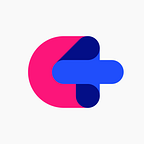Pulled Between Roles
Balance, it’s not that easy sometimes.
We started working on our new contract, pulling together preliminary ideas, timelines, possible directions for tech and contingency plans for executing properly within the tight 6-week timeline we had been given. The client was clear that the deadline was fixed, so we were unable to offer suggestions for extending it, doing a solid design-based approach to the first product, etc.
In short, we had to sprint and so we did… One thing I didn’t consider, though, was how to deal with being pulled between two different roles: CTO of a new startup, and Partner in a design firm.
Acting CTO
My official role in the project was CTO for the company to whom we were contracting. This meant that I was responsible for all the tech decisions for the product we were supposed to release within six weeks, and also for the general future direction of the company (tech-wise). I’m certainly not the first to deal with this level of responsibility, but it was the first time I was responsible at this level.
Partner
At Slant, I was still a half partner but was already structuring my work and contributions as if I were a full partner. With this also came a level of responsibility I hadn’t ever had to hold before. Prior to joining the company I had essentially worked either independently or towards my own goals for the better part of a decade. Furthermore, I was generally at research, academic or arts institutions and certainly not approaching my career from a purely commercial mindset. So, I found myself challenged with making economic and business decisions with respect to my other partners instead of attacking problems and work from the purist and privileged perspective to which I had become so accustomed.
The Pull
Early on I found myself being torn between the responsibilities of being CTO for one company and Partner in another. At first I thought it would be quite easy because one of our other partners was doing exactly the same thing for a small startup based out of Washington. However, I certainly didn’t feel I was balancing both things with any real level of grace.
Reflecting on this moment I still have a hard time figuring out what was so difficult about my position. There were a number of things, like the pressure of executing in a short amount of time, keeping the costs of development down while keeping profitability up, having to make my decisions based on inputs from two separate sets of people, etc. But, I think the most important and difficult part for me was the balancing and management of my own emotions in the face of the situation.
I often felt pulled between what one set of interests wanted v. the other. In many instances both sets were “right” about their positions but what each wanted was often very different. The details of the situation didn’t really matter, but what did was how I felt knots and tension build up in my stomach, in my shoulders and in my mind about the whole situation.
A couple of examples of this pull were:
- Do I work in the company’s offices, outside of the city, or do I work remotely from Slant? Given the timeline for the project it made sense for me to work from Slant where I would be more productive and have connection to my small team, on the other hand it also made sense for me to be at the company’s h.q. to be in constant contact with them at such an early stage.
- Do I cut the costs of development for a smaller MVP, or do I go all out for the better initial version? From the CEOs perspective, the higher quality product was the only option and we had to strive for that. From my perspective it made sense to go for a minimum viable product and iron out the kinks afterwards. Though not directly related to Slant (i.e. this was a decision about the internal deliverables of the other company), producing more meant more hours and better compensation, producing less meant fewer hours and less profitability.
Being pulled between two separate roles was really difficult. But, I had made the commitment to both parties and was adamant to see it through.
